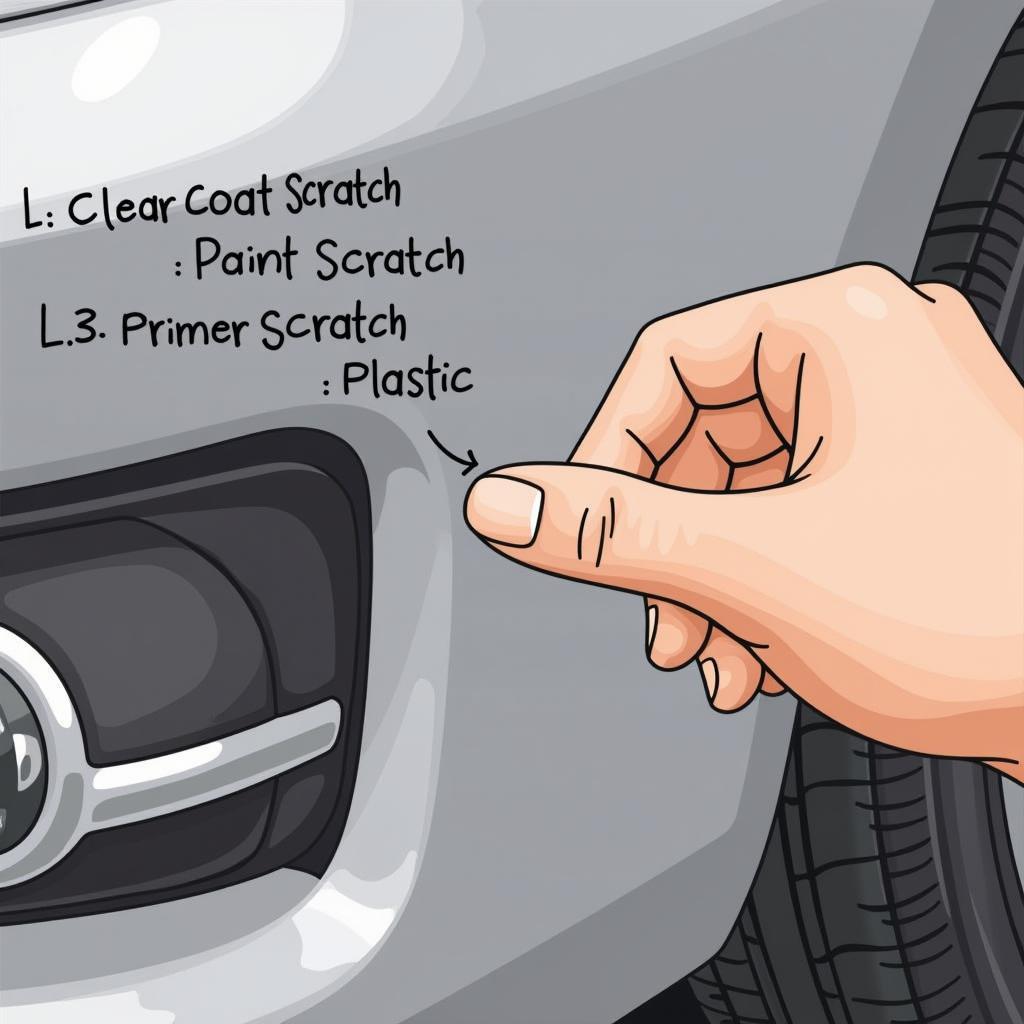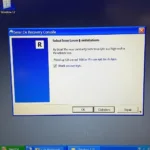Deep scratches on your car bumper can be an eyesore, diminishing the overall appearance of your vehicle. Fortunately, depending on the severity of the damage, you can often repair these scratches yourself, saving money and time compared to a professional body shop. This guide will provide a comprehensive overview of how to repair deep scratches on a car bumper, from assessing the damage to achieving a professional-looking finish.
Assessing the Damage: How Deep is Too Deep?
Before starting any repair, it’s crucial to assess the extent of the damage. A light scratch that only affects the clear coat can often be addressed with a simple polish. However, deeper scratches that penetrate the paint and reach the primer or plastic underneath require more involved repair methods. Run your fingernail across the scratch. If your nail catches, it signifies a deeper scratch needing more attention. For very deep scratches that expose the bare bumper material, professional repair or bumper replacement car bumper repairs crewe may be the best option.
Determining the depth will guide your choice of repair method, whether it be using a touch-up pen, scratch remover kit, or more advanced techniques.
Gathering Your Supplies: The Right Tools for the Job
Having the right tools and materials will make the repair process smoother and yield better results. For minor scratches, you may only need car wash soap, microfiber towels, and a scratch remover compound. Deeper scratches will require sandpaper (various grits), primer (if necessary), touch-up paint, clear coat, masking tape, and polishing compound.
Investing in quality materials will ensure a more durable and aesthetically pleasing repair. Don’t skimp on the essentials.
Step-by-Step Guide to Repairing Deep Scratches
-
Clean the Area: Thoroughly wash the damaged area with car wash soap and water. Rinse and dry completely with a microfiber towel. This removes dirt and debris that can interfere with the repair.
-
Sanding the Scratch: For deeper scratches, start with a coarser grit sandpaper (e.g., 220-grit) to smooth the edges of the scratch and remove any loose paint. Gradually move to finer grits (e.g., 320, 400, and then 600-grit) to feather the edges and create a smooth surface for the touch-up paint to adhere to. Be careful not to over-sand and damage the surrounding paint.
-
Applying Primer (if needed): If the scratch has penetrated the paint to the plastic bumper, apply a thin coat of automotive primer to the affected area. Allow the primer to dry completely according to the manufacturer’s instructions. If you need car bumper repair in grand prairie tx, consider looking for professionals in that area.
-
Applying Touch-Up Paint: Using a touch-up pen or brush, carefully apply thin coats of touch-up paint to the scratched area. Allow each coat to dry before applying the next. Avoid applying too much paint at once, as this can lead to drips and unevenness.
-
Applying Clear Coat: Once the touch-up paint has dried completely, apply a thin, even coat of clear coat to protect the paint and blend it with the surrounding finish.
-
Wet Sanding and Polishing: After the clear coat has dried for at least 24 hours, use very fine grit sandpaper (e.g., 2000-grit) and water to wet sand the repaired area. This removes any imperfections and blends the repair seamlessly. Follow up with a polishing compound and a microfiber cloth to restore the shine and achieve a professional-looking finish. You can also get specific help with repairs like car bumper scuff repair cardiff.
When to Seek Professional Help
While many scratches can be repaired at home, some situations warrant professional intervention. Deep gouges, cracks, or damage to the bumper’s structural integrity are best addressed by a professional body shop. Also, if you’re not comfortable with the DIY process or lack the necessary tools and experience, seeking professional help will ensure a high-quality repair. For specific areas like repairing a scratched car bumper door, search for information on how to repair deep scratches on car bumper door. Professional car bumper repair farnworth services are also available.
“Repairing deep scratches yourself can be satisfying and save money,” says automotive expert, John Smith, “but knowing your limitations is key. Don’t hesitate to call in the pros when needed for the best outcome.”
Conclusion: Restoring Your Bumper’s Beauty
Repairing deep scratches on your car bumper can significantly improve your vehicle’s appearance. By following these steps and using the right techniques, you can often achieve professional-looking results at home, restoring your bumper’s beauty and protecting it from further damage.
FAQ: Common Questions about Bumper Scratch Repair
-
Can I use any kind of paint for touch-ups? No, always use touch-up paint specifically matched to your car’s paint code.
-
How long does it take for touch-up paint to dry? Drying time varies depending on the product, typically 30 minutes to an hour between coats.
-
What if I don’t have a polishing compound? A rubbing compound can sometimes be used as an alternative, but it’s more abrasive.
-
Can I repair a cracked bumper myself? Cracks often indicate structural damage, and professional repair is recommended.
-
How can I prevent future bumper scratches? Be mindful of parking distances, avoid tight spaces, and consider installing a bumper protector.
-
What is the cost of a professional bumper repair? Costs vary depending on the severity of the damage and the shop’s rates.
For further assistance, don’t hesitate to contact us via WhatsApp: +1(641)206-8880, or Email: [email protected]. Our 24/7 customer service team is always ready to help.


